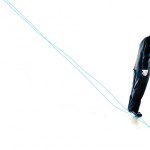In-house plagiarism: is it ever okay to steal another reporter’s words?
When a Toronto Star intern copied chunks of a colleague’s article, it became clear that many journalists were confused about how to use internal material
On October 28, 2010, Toronto Star staff reporter Daniel Dale wrote a clever lead for his article about vanity licence plates: “You may be a Budweiser-guzzling ex-cop stripper who worships Buddha, carries a pistol, uses Viagra and supports Barack Obama, fine. Just don’t you dare mention any of those facts on your licence plate.”
On August 2, 2013, Star summer intern Marc Ellison wrote another article on vanity plates. “You might be a pro-life, steroid-injecting, devil-worshipping white supremacist who supports the Maple Leafs, believes they’re a superhero and is a self-confessed hit with the ladies. Just don’t you dare mention any of those facts on your personalized licence plate,” his lead reads. In all, the article contains six paragraphs plagiarized from Dale’s work.
All journalists know plagiarism is unacceptable, but the incident at the Star opens up a new debate about whether the severity of the transgression depends on where the original work appeared.
Ellison’s article was the first time in nearly seven years as public editor at the Star that Kathy English came across in-house plagiarism, as she dubbed it in a subsequent column. “It’s important to understand,” she says, “the principle that using the words of someone else, even if it’s a colleague, is still plagiarism.”

Kathy English is the public editor of the Toronto Star (PHOTO: DAVID COOPER/TORONTO STAR)
Yes, it was plagiarism—but not a black-and-white case of it. The writer didn’t copy from another news organization, but from within his own. When the Star published a note informing readers that Ellison’s piece contained unattributed work taken from another staff writer, English was surprised by the response of some reporters, columnists, editors and journalism professors, who questioned whether it was really plagiarism to take material from the Star’s own archives.
Sometimes taking some background information from the Star’s repository is appropriate, English wrote in her column. But the difference with Ellison’s case was how explicit it was. “To just copy somebody’s lead?” she asks. That, and a quote recycled from Dale’s piece, was telling: as she writes in her column, Ellison plagiarized “in form and substance” the work of another journalist. (Dale declined to comment for this story. Ellison didn’t respond to requests for an interview.)
“In-house plagiarism is not a phrase that is used one-thousandth of the time plagiarism is,” says David Swick, who has taught journalism ethics at the University of King’s College. The incident at the Star turned attention towards the previously unexplored issue. “I don’t think it’s something that a lot of journalists think about,” says Craig Silverman, whose Regret The Error blog on the Poynter Institute’s website covers accuracy, errors and corrections in journalism. He’s tracked plagiarism since October 2004 and is hard-pressed to think of examples of reporters lifting a colleague’s work, noting it’s surprising that it happened in the first place—because the copier has a working relationship with the copied. Silverman says, “It’s probably one of the most awkward forms of plagiarism.”
It’s also one of the most rarely reported forms. Research by the Ryerson Review of Journalism shows Ellison’s is the only acknowledged case of it. But there are similar incidents. Former The New Yorker staff writer Jonah Lehrer was caught recycling content from his work published elsewhere in 2011 and 2012 at least 13 times. This “self-plagiarism,” or “auto-plagiarism,” is curious in the same way “in-house” is; both raise the question of how serious the act is compared to “real” plagiarism. In an article partially defending Lehrer, Robert Wright of The Atlantic wrote: “I’m not addressing at all Lehrer’s alleged instance of actual plagiarism, which is a much more serious matter.”

Toronto Star reporter Daniel Dale’s work was plagiarized by an intern at the paper (PHOTO: COURTESY OF DANIEL DALE)
Both forms, though, are a serious matter. Whether you stole from someone five steps away or someone 5,000 kilometres away, the offence is still the same, Silverman says. “There is a fundamental level of dishonesty associated with it.”
That’s why readers deserve the same transparency when dealing with in-house plagiarism, as they’d get in an external situation. “I think it’s important to own up to those kinds of things,” says Devon Murphy, blog editor at Huffington Post Canada. “We want to know that our media are holding their reporters accountable.”
In “Professional harikiri,” a blog post on his own website, Ellison confessed and expressed his remorse—which garnered him a supportive response on Twitter. English tweeted he was “courageous to take responsibility.” That didn’t sit well with Murphy, who wrote her own blog post for Huffington Post Canada titled, “Since When Do Plagiarists Deserve Praise?” Murphy says the support Ellison received, particularly from English, was out of place. “It didn’t seem like a serious enough take on what had happened.” Even if people aren’t familiar with the concept of in-house plagiarism, Murphy doesn’t think there’s a true distinction. It’s still plagiarism, and it should be treated as such.

No matter what you call it, plagiarism is wrong, says journalist Devon Murphy (PHOTO: COURTESY OF DEVON MURPHY)
Roy Greenslade, who blogs for Britain’s The Guardian, reported on English’s column and Ellison’s blog response. The widespread attention may have been because this is something journalists don’t talk about often. “I’d be surprised if any ethical code of any organization specifically talks about in-house plagiarism,” admits Silverman. The Star’s own journalistic standards guide, which has eight paragraphs on attribution and plagiarism, makes no mention of the term. “I don’t think we need to lay it out specifically,” English says. “People know when they’re taking other people’s material.” Silverman says that while it’s useful to include the exact term “in-house plagiarism” in ethical codes, the most efficient way to fix the problem would be for news organizations to give journalists “the guidance on how to do proper attribution for pre-existing, in-house material.”
In the meantime, if nothing else, the Ellison incident exposed the confusion in newsrooms over internal attribution practices. As English says, “We’re all trying to come to greater understanding.”
Related Posts
 Mental health: why journalists don’t get help in the workplace
Mental health: why journalists don’t get help in the workplace Friday Funny: watergate wannabes
Friday Funny: watergate wannabes Fetishizing the form’: on the importance of word counts
Fetishizing the form’: on the importance of word counts How Red Bull is clipping journalism’s wings
How Red Bull is clipping journalism’s wings And They Throw Erasers Too, Just Like in Public Schools…
And They Throw Erasers Too, Just Like in Public Schools… How the Newsmaker of the Year Becomes the Controversy of the Day
How the Newsmaker of the Year Becomes the Controversy of the Day
Marilee Devries was the Head of Research for the Spring 2014 issue of Ryerson Review of Journalism.






































